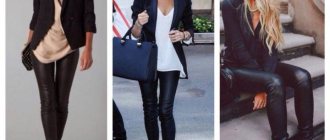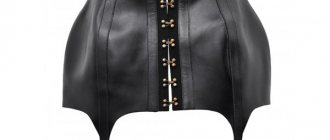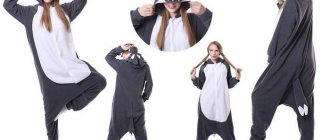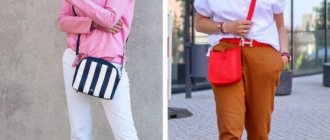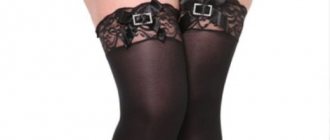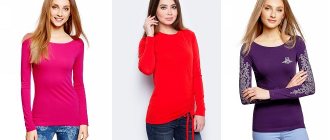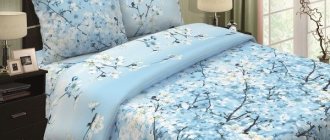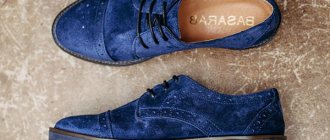The material contains information about products, the use of which may harm your health.
Before looking for the “ten differences,” we need to be clear.
Before looking for the “ten differences,” we need to be clear.
What came first? Chicken or egg? The first to appear was a tailcoat.
In the eighteenth century, officers of French mounted units solved two problems at once with the invention of the tailcoat. Innovations: long tails with one slot and a shortened front part with a loose fastener.
Modern classic version
Modern classic version
Firstly, in such uniforms it is easier to jump on a horse.
As well as dismounting later, getting out of the saddle.
As well as dismounting later, getting out of the saddle.
Secondly, the ladies considered cavalry officers who appeared at balls in improved uniforms to be very stylish.
The men of the civilian class enviously appreciated the graceful appearance of the brave competitors under the Spurs. Undoubtedly convenient for dancing and riding. They adopted it into peaceful use, eventually introducing a strict secular gloss.
Ballroom dancing
Ballroom dancing
Type of equestrian sport - dressage
Type of equestrian sport - dressage
So the stripes on the tailcoat trousers are a greeting from the distant past from the French military.
Now about the rules of wearing the most demanding item of men's wardrobe. Suddenly it happened, you were invited as a guest to an event where a tailcoat is required. This is easy to understand from the invitation card. It should say: white tie.
1) The color of the tailcoat is only black. A white tailcoat, for example, belongs to waiters.
Colors other than black may be identification marks of other service departments.
Colors other than black may be identification marks of other service departments.
2) Shoes - patent black Oxford shoes with closed lacing.
3) Socks. This is where many new Russians abroad in the nineties made mistakes. As well as domestic stars of that period at the ceremonies. Under no circumstances are they white!!! Socks must be exclusively: black, silk, long.
Of course, without teddy bears, bunnies and circular inscriptions like “Genius” or “Hero”
Of course, without teddy bears, bunnies and circular inscriptions like “Genius” or “Hero”
4) The butterfly is strictly white.
5) A pocket square that fits into the breast pocket. White. It is important - from a fabric of a different texture than the butterfly.
6) Vest and shirt with a turn-down collar. White. Buttoned vest with three buttons.
Have you already prepared yourself for wearing a tailcoat and are you ready to go out?
Have you already prepared yourself for wearing a tailcoat and are you ready to go out?
7) The tailcoat is never buttoned!
Stop for a second. Check everything again! No belts or watches!!! The only exception is an expensive pocket watch on a chain in a vest pocket.
Many will probably ask: “What about James Bond?! He can do anything???!!!”
Many will probably ask: “What about James Bond?! He can do anything???!!!”
He's allowed - he's in a tuxedo. This item of clothing will be discussed further.
Here the authorship of the invention in the field of fashion belongs to the British. The predecessor of the tuxedo was the smoking jacket. The clothes are not formal at all. Moreover, it was intended to save those very tailcoats for special occasions. From pipe sparks, cigar ash and tobacco smoke.
Going to the smoking room, the respectable gentleman exchanged his tailcoat for a tuxedo. What was represented in the eighteenth century by a short velvet jacket with a silk collar and wide cuffs. More like a robe.
The ash easily rolled off the silk parts.
The ash easily rolled off the silk parts.
Having retired with a cigar and a glass of port in an armchair, one was supposed to unbutton the tuxedo. The trousers were protected from stray embers by a wide silk sash - a cummerbund.
It came to English from Hindi. Where कमरपट्टा means “belt”.
It came to English from Hindi. Where कमरपट्टा means “belt”.
As an object, it was borrowed by the British colonial military from the Indians.
As an object, it was borrowed by the British colonial military from the Indians.
The protective suit was topped with a smoking cap.
Protects hair from being soaked in tobacco smoke.
Protects hair from being soaked in tobacco smoke.
In contrast to stiffness and strict rules, a fashion for oriental exoticism and comfort arose among the youth of the British elite. The Prince of Wales, the future King Edward VII, preferred a tuxedo as his home suit.
He started by receiving visiting friends in a tuxedo. Who liked the idea given the lack of central heating in British homes.
He started by receiving visiting friends in a tuxedo. Who liked the idea given the lack of central heating in British homes.
At the same time, being according to all the rules in a snow-white shirt with a bow tie.
At the same time, being according to all the rules in a snow-white shirt with a bow tie.
Then the Prince grew bolder and gave the tuxedo to be completed by a tailor. They did their best by changing some details. By presenting the customer with a suit in which it is quite acceptable to arrive for dinner in polite society.
Since the Prince of Wales was known in his youth as an indisputable style icon, the fashion for such freedom as a tuxedo quickly spread among the major English youth.
He looked more modest than a tailcoat. Colors may vary. As is the material.
This is a very modern option. An unacceptable extreme for those times. But the model and cut are vintage.
This is a very modern option. An unacceptable extreme for those times. But the model and cut are vintage.
Nevertheless, the alternative to the tailcoat has caught on. It has reached our times. Becoming a classic in the form of a tuxedo.
Instructions for use are attached below
Instructions for use are attached below
Having received an invitation where the dress code indicates black tie, you should know that a tuxedo will be required.
1) Butterfly - of course black.
Most often there is only one button. Less often - two.
Most often there is only one button. Less often - two.
2) Pasha scarf. Liberties are allowed in its color. White is considered ideal. And in general, it’s time to debunk the myth about the true purpose of the accessory. The pasha scarf was invented during the popularity of snuff. You can imagine what a scarf the color of alpine snow would look like if you sneezed greenish-brown tobacco secretions into it.
Read more about the pasha scarf here.
3) A tuxedo should always be fastened with the top or single button. The only exception: if you are sitting at a table or in a chair in the smoking room. In this case, others admire the silk belt mentioned above.
4) Cummerbund - its color may vary. But ideally black. The main thing is not to confuse the position when putting it on. The folds should face up.
This traditional arrangement of folds gave rise to many jokes. In the same way that crumbs from lavish dinner parties get stuck in the folds. Which are nice to enjoy in difficult times.
This traditional arrangement of folds gave rise to many jokes. In the same way that crumbs from lavish dinner parties get stuck in the folds. Which are nice to enjoy in difficult times.
5) Shoes - perfect classic black patent leather shoes. But options are possible.
6) As for the “below the waist” look, today it is no longer uncommon for a tuxedo to be sold separately. Without pants.
7) It’s time to move on to modern times. And let’s face it, there is now a huge variety of cuts and colors of tailcoats and tuxedos. And these items of clothing have long ceased to be purely masculine.
As for the rules on how and what to wear with a tailcoat or tuxedo, today some can easily wear them with sneakers and jeans.
Read about the secret of Montana jeans here.
I hope you found it interesting. Thank you for attention.
Tailcoat and tuxedo
Despite all the solemnity, both jackets were not previously items of exclusively festive evening wardrobe. The tailcoat was invented based on the military uniform. The officers wanted to remain smart, even while sitting in the saddle and moving to war.
Important! Both men's wardrobe items are options for special occasions.
A tuxedo is also a festive evening wear, but has a slightly different cut and some stylistic features. Its use is possible only in certain cases provided for by the dress code.
Description
Tailcoats are a suit for special occasions, which have an interesting cut. The front part is short, and the rear parts are long, descending below the hips. The trousers are straight, with satin stripes on the sides.
There are certain rules for wearing it:
- wear only on official gala evenings, after 19:00;
- black color is required;
- under the jacket they wear a thin white shirt with a stand-up collar;
- The use of a bow tie is mandatory, the sleeves are fastened with modest cufflinks;
- the jacket is worn unbuttoned, revealing the expensive buttons of the vest.
A tuxedo is also considered formal evening wear. This is a special cut of the jacket that is never sold with trousers. There are a number of features of this item of men's wardrobe:
- it is also combined only with white shirts and shirts; the stand-up collar suggests wearing a bow tie;
- the lapels of such a jacket are trimmed with silk;
- A tuxedo is always worn with a button fastened, as prescribed by the rules of etiquette.
Both suits have their own charm and are perfect to wear to formal events or other occasions. For example, championships in ballroom dancing or horse riding require the use of a costume. However, the cut of dance costumes differs significantly from the usual formal attire.
Comparison of external characteristics
Despite the formality of both costumes, the tailcoat is worn exclusively for special occasions. Usually the men's dress code is announced additionally, along with the invitation. A tuxedo can also be worn to informal meetings.
Important! Both suits have many similar characteristics, but are also very different from each other.
Both jackets have lapels trimmed in silk or satin. However, the cut of the tailcoat is very different, thanks to the long back flaps. The color scheme also distinguishes these two jackets; the tuxedo is allowed in various colors, including light shades. The tailcoat can only be black.
Difference in official etiquette
A tuxedo allows some liberties in the image and does not have strict rules for colors and features of combination with other wardrobe items. The tailcoat is strictly official and requires clear rules on what to wear with the suit.
A thin white silk shirt with a stand-up collar is a must in combination with a tailcoat. A silk butterfly is tied around the neck and the look is complemented with a pique vest. It, unlike a jacket, must be fastened with all buttons. In addition, it is expected to wear cufflinks, a watch on a chain and a white scarf folded in the breast pocket. The last accessory can only be excluded if orders are used.
Important! You should not wear a wristwatch with a tailcoat; according to etiquette, this is considered bad form.
Despite the solemnity of both jackets, the tailcoat has a large number of rules for combining with other items of clothing and wearing at formal events. A tuxedo gives you much more freedom in choosing a stylish look.
Did you like it?
(+27 points, 27 ratings)
Loading…
Found a mistake? Select it and press Ctrl + Enter. We'll fix everything!
Author of the article:
Svetlana Gladkova
My creative nature is perfectly reflected in creating texts that interest readers. Although sometimes their feelings regarding my articles are very contradictory. It's like an outlet where I find a breath of fresh air. Do you want to ask me something? I am always open to dialogue.
auto RU
What is
Tailcoats are a men's evening dress that would be appropriate for special occasions. The clothing looks like a jacket, which has short (to the waist) rigid flaps in front, and the back part goes down below the hips, forming a dovetail. Trousers should be narrow, with pockets, a high belt, suspenders and silk stripes (braids) on the sides. The main color of the suit is considered black, but sometimes dark blue or “shade of night” is allowed. A man needs to understand that such a luxurious garment as a tailcoat is suitable for a special occasion: a wedding, a diplomatic audience, an evening party, and, of course, folds on the back or tails are not allowed.
In addition to the tailcoat there are required elements:
- a white shirt with a stiff, starched collar, the corners of which curve down;
- the shirtfront is a chest insert, it gives the image greater solemnity;
- a silk bow tie, which can only be white or black;
- a white vest (service personnel wear a dark version), its sharp corners should peek out from under the shortened tailcoats;
- formal patent leather boots or lace-up shoes, black socks;
- long black coat and white gloves, silk scarf with tassels for cold weather;
- silk top hat or folding hat - hats for the street;
- a pocket watch on a chain, a white scarf in the breast pocket of a jacket, or orders hung on the left.
The tailcoat is made from high quality worsted wool, sometimes from mohair or wool blends. The galloons (stripes) on the trousers are finished with satin, the lapels on the tailcoat must be made of pure silk. The vest is made from pique fabric with a small rib, which is easy to wash, does not glare, does not wrinkle, and holds its shape perfectly. Buttons should be made of mother-of-pearl or natural pearls.
The costume is also used in equestrian sports and in the European ballroom dancing program. The riding coat is complemented by stretch cotton leggings. The cut of a men's jacket for a dancer differs from the classic one. It is important that when moving, folds do not form in the area of the sleeve and shoulder girdle, so the slope of the shoulder decreases. The collar should not be high, then it will not rub your neck while dancing.
Male
Female
Everything you need to know about tailcoats and tuxedos
Due to the fact that such concepts as social life and public receptions have appeared in the lives of modern people, many successful men have to figure out the difference between a tuxedo and a business suit. When strict dress code requirements are imposed on guests at a gala event, they have to choose a tailcoat and tuxedo instead of a suit to comply with the rules. Men do not always understand the difference between this form of clothing. This article will help you resolve this issue.
Wearing etiquette for guests and staff
A tailcoat is worn exclusively for special occasions: a party, a formal dinner, an official reception, a ball, a performance. You cannot walk down the street in such an outfit. A man should buy a long coat or raincoat, the outerwear should completely hide the tails at the back. In the diplomatic world, people appear in such a suit only at evening audiences. The white version is worn in exceptional cases; it is suitable for meetings in the warm season in the fresh air.
A white pocket square, boutonniere or orders are used as accessories. You need precious cufflinks on your shirt that won't be conspicuous. The main decoration of the outfit is the pearl, silver or gold buttons of the vest. For indoor use, white gloves are recommended. The watch must be a pocket watch on a chain and only made of precious metal.
If the organizers of the event decide to dress the service personnel in a tailcoat, you should know the differences between such a suit and the official one:
- The color of the jacket can be not only black, but also green, burgundy, and lilac.
- A white pique vest cannot be worn under uniform.
- The uniform for waiters includes a black cloth vest and tie.
A tailcoat is considered the best clothing for a formal event with a “White tie” dress code. To avoid looking stupid, it is recommended to combine a jacket with classic high-cut trousers, a white shirt and a vest. A formal suit requires perfect posture, so men who have back problems choose a tuxedo or wear a special corset.
What is a suit, tuxedo and tailcoat?
Men's suits are the basic clothing of a modern man's wardrobe. This is a set of jacket and trousers, which in some cases can be supplemented with a vest. They come in a variety of designs. There are business, casual, club and party suits. The difference between the different models is quite clear. According to cut and design, men's suits are divided into several types:
- Single-breasted, in which there is a row of buttons on one side and loops on the other. This is the most popular type of men's suit, which is used as casual wear.
- Double-breasted, they have two rows of buttons. Such models should be worn to important formal events, with jackets fastened with all buttons.
- A classic three-piece, which in addition to a jacket and trousers includes a vest. According to etiquette, men wearing such a suit can, without asking permission from those present, remove their jackets during communication.
In addition to casual and business suits, there are models for formal and festive events. These include a tailcoat and a tuxedo, the differences of which lie in the cut of the front and back of the jacket. These types of men's suits developed in the 19th century, when elites had to comply with the protocol of social life. A formal men's suit was required to be worn according to protocol at special social events:
- for a wedding;
- while attending palace receptions;
- to a funeral;
- to the theatre.
The tailcoat is always made of black expensive fabric, fastened with one button, has a cone-shaped neckline, the back flaps of the tailcoat are lower than the front ones and have the shape of tails, the length of which should be below the knees.
The tailcoat is considered a classic formal dress that must be worn according to strict white tie protocol.
A tuxedo was a club jacket that had a signature trim in the form of silk or satin lapels. They first appeared in English clubs where there were smoking rooms for club members. These jackets, with silk and satin lapels, were worn while smoking cigars, the ashes of which could quickly slide off the smooth finish. Later, when smoking rooms appeared in private salons in Europe and Russia in the second half of the 19th century, tuxedos began to actively enter the wardrobe of men of their high society.
Shiny silk or satin lapels are what differentiate a tuxedo from a jacket. Such clothing is not used in everyday life and business; it has become an integral part of social events with a high social status.
Comparison of external characteristics
Modern suits can be distinguished by a variety of model ranges, from which you can select ideal options for different types of male figures:
- European;
- English;
- American;
- Casual for walks and meetings in an informal setting;
- business;
- protocol;
- classic.
Men's suits, even with fitted jackets, do not restrict movement. They come with straight trousers, the width of which may vary. Modern models, depending on their purpose, can be combined with various elements of a men's wardrobe. Jackets, unlike suits, in some cases can be worn unbuttoned.
The tuxedo is paired with narrow or straight trousers with silk stripes.
The difference between a tuxedo and a modern suit is that it has a fitted cut and satin lapels. It can be single-breasted or double-breasted, like a suit jacket, but it cannot be worn unbuttoned. The tuxedo should be paired with trousers and a shirt of a certain type. The tuxedo itself can only be black or dark blue. A tailcoat is another option for men's attire, which differs from a traditional jacket with long tails in the shape of a swallowtail. It has a fairly narrow top that hugs the figure and can only be paired with a certain range of men's clothing. The tailcoat can only be black.
Modern men's suits can be of different shades, depending on the purpose of such men's clothing. Classic models are made from dark fabrics. Casual suits, which are usually worn in an informal setting, can be light, checkered, and trimmed with golden buttons.
Wearing rules
The difference also concerns wearing rules. The tailcoat is considered a classic formal dress that must be worn according to strict white tie protocol. It should only be worn with a white shirt, a white starched vest and a white bow tie. It is mandatory to wear a white bow tie, which must be tied only by hand.
It is mandatory to wear a bow tie, which must be tied only by hand.
For a tailcoat, you need to choose narrow trousers with silk stripes that have a high waist. They are worn without a belt. Shoes must be black and patent leather. Accessories include a white scarf, which is inserted into the breast pocket of the tailcoat, and white gloves.
A tuxedo, unlike a tailcoat, is not such an official dress suit. Today, designers offer models of tuxedos in light shades, and fashion allows you to include a number of free interpretations in this festive jacket that do not contradict the protocol of the event. In addition, there remains the classic version of a formal tuxedo in a dark shade with silk lapels, which must be combined only with a white shirt and a bow tie or platstron. The tuxedo is paired with narrow or straight trousers with silk stripes. Instead of a belt, a white silk sash is used.
Instead of a belt for a tuxedo, a colored silk sash is used.
Costumes are divided according to the type of their purpose. Strict business models are worn to work in the office. Double-breasted jackets are worn for important business and protocol events. Classic business suits should always be worn with a shirt and tie in matching colors.
How to care for your tailcoat?
The tailcoat needs timely care; we list the basic rules for care that guarantee the preservation of a presentable appearance and all the positive qualities of these suits.
Is it possible to wash a tailcoat?
The tailcoat should not be washed in a washing machine, as this can ruin the appearance of the product. In case of contamination, you must take the tailcoat to the dry cleaner. Small stains are removed with a soft brush, and the dirty stain is cleaned with gentle movements.
How to iron a tailcoat
If wrinkles have formed on your tailcoat, it is best to resort to using a steamer. An iron is not the best option for this. In addition, you can fill the bath with hot water, hang your tailcoat on your hanger and leave it. Under the influence of steam, all folds will be straightened, thus, the tailcoat will return to its original attractive appearance.
How to store a tailcoat
The tailcoat must be stored in the closet, on hangers in a case. It is best to choose a cover made from natural materials: the suit will “breathe” and will not accumulate unpleasant odors. It is not recommended to store the tailcoat near direct sunlight, as ultraviolet radiation can have a negative effect on the rich color and fabric of the product.
So, a tailcoat is an original and unique suit, these products were originally used by the military, but gradually it came into use and everyday life and became part of the men's wardrobe. Currently, they are widely distributed throughout the world, are made to order and transform the usual image of a man beyond recognition. Many formal meetings are incomplete without these comfortable and elegant suits. Proper care and good attitude will extend the life of your tailcoat.
When to wear it
A business jacket and trousers should be worn to the office, matching the color of the shirt according to corporate rules. For formal official events at which officials will be present, you should wear a black tailcoat if the protocol states a “white tie” dress code. The difference between a tuxedo and a tailcoat is that it can be worn for less formal events:
- weddings;
- parties;
- film premieres;
- techniques;
- to nightclubs for closed parties;
- holiday concerts, etc.
For everyday wear, walks, parties with friends, you can use loose-fitting suits in the Casual style. Compliance with the dress code rules is mandatory at official events attended by top officials. Usually, special invitations are sent to such receptions, which indicate the protocol dress code. After carefully reading the invitation, you will need to choose a men's formal attire that suits the occasion, which can be a tailcoat or tuxedo. According to social protocol, it is not customary to wear business suits to festive receptions.
History of the creation of the tailcoat
The history of the origin of the tailcoat is curious; cavalry officers were the first to use this costume; this clothing was very comfortable for riding. Due to the excellent aesthetics, the image of a strong, intelligent and status man was created.
“The tailcoat appeared in France in the middle of the 18th century and was exclusive military clothing and initially in no way belonged to ceremonial clothing. In those days, cavalry officers belonged, as a rule, to the upper class, and, of course, often appeared at parties and balls. This led to the fact that the tailcoat became fashionable clothing for special occasions at that time." Wikipedia
After a while, tailcoats began to appear with very large collars, lapels and ties, which sometimes hid the chin, and the height of the collar from the shirt could reach the level of the middle of the cheeks.
It is curious that in Russia tailcoats were forbidden to be worn during the time of Paul I; after the death of the emperor, these suits again became fashionable, gradually came into use and even became part of the everyday wardrobe.
Some of the first tailcoats were made of cloth, velvet, and were most often blue, but also brown and green. This is mainly due to the fact that black had direct associations with mourning ceremonies. Therefore, men, as a rule, preferred to use tailcoats of other colors for every day.
In the 19th century, the tailcoat became unpopular and ceased to be in demand. They were replaced by tuxedos and jackets. Thus, over time, the tailcoat became a costume for official, ceremonial and protocol events.
Currently, these products are considered relevant and symbolize the high status and wealth of a man. Tailcoats are used by dancers in ballroom dancing, as well as by some musicians and conductors in opera houses. This clothing is associated with a certain dress code at important events. High quality material, practicality and long service life distinguish these models.
